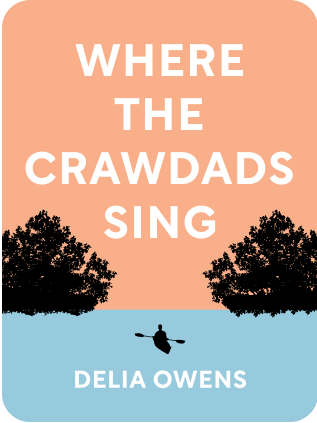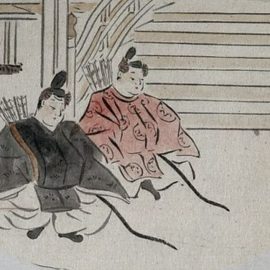

This article is an excerpt from the Shortform summary of "Where the Crawdads Sing" by Delia Owens. Shortform has the world's best summaries of books you should be reading.
Like this article? Sign up for a free trial here .
Who is Rodney Horn in Where the Crawdads Sing? What is his role in the story?
Rodney Horn was a resident of Barkley Cove who was a key witness in the case against Kya Clark for Chase Andrews’ murder. Rodney Horn came forward with new information he saw while out on his boat, and later testified at Kya’s trial.
Learn more about Rodney Horn in Where the Crawdads Sing.
Evidence and Rodney Horn’s Statement
When Ed and Joe entered Kya’s shack without her knowledge, they stood dumbfounded at the sight of her enormous collection. They thought what most people from town thought: she had lost her mind.
The men searched every drawer, closet, and behind every specimen for a red woolen item, a diary, ticket stubs, anything that might help. After a while, Joe called Ed onto the porch. In his hand was a red wool hat. Ed pulled out the baggy containing the fibers and held them up to the hat. They looked like a perfect match. They took the hat for testing at the lab.
The day the report came back, both men celebrated the officially confirmed match. Kya’s hat had left the fibers on Chase’s jacket. The case against Kya was still tenuous. Her motive as a jilted lover was shallow at best, and there was her alibi to contend with. Still, they thought the fibers were enough to at least bring her in and possibly charge her.
In mid-December, Ed and Joe were in the office devising a plan to find Kya when Rodney Horn, a retired mechanic, came in. He told the officers about something he’d seen at the end of August that might have something to do with their case. He’d been out fishing with his friend Denny Smith and witnessed something at one of the nearby coves. After he told the men his story and left, the two officers stared at each other. They finally had a proper motive
The Burden of Proof: Rodney Horn Testifies
The prosecutor, a man named Eric Chastain, was called to present his case first. He had a number of witnesses to call, each with damning evidence against Kya.
He called:
- Rodney Horn, who’d been out fishing when he and a buddy heard a woman screaming. They saw Kya, partially undressed, kicking Chase Andrews while he lay on the ground. The last thing they heard was Kya screaming that if Chase touched her again, she’d kill him.
- The coroner, who testified about the injuries sustained by Chase and the red fibers found on his jacket. The prosecution focused on injuries that pointed to Chase falling backwards, as though pushed, and the match between the fibers on the jacket and those of the hat found at the shack.
- Sheriff Jackson, who testified about finding the body and the investigation. He said they determined it was foul play because of the lack of evidence at the scene.
- Larry Price, the bus driver between Greenville and Barkley Cove. Mr. Price confirmed that it was possible to travel between the two towns multiple times in one day. He also said none of the passengers on the bus the night Chase died looked like Kya. But there was a young white man, tall and thin, wearing a big blue cap. He said the passenger kept his head down and didn’t look at anyone. Mr. Price thought it was possible that Kya disguised herself to be that skinny man.
- Joe King, who’d driven the 2:30 am bus back to Greenville the morning of October 30. Again, Mr. King said Kya was not on the bus, but there was an older woman with gray hair. She was also tall. Mr. King said he guessed it was possible that the woman could have been Kya dressed up to look elderly.
Although these witnesses’ testimonies painted a bad picture regarding Kya’s guilt, Tom was not deterred. He questioned each witness expertly, creating doubt about their statements.
- Rodney Horn admitted it was possible that Kya was in trouble and defending herself when they saw her kicking Chase.
- The coroner admitted that Chase’s injuries would be similar if he’d simply fallen. He also said that fibers can stay on a jacket, even with washing, for years.
- Sheriff Jackson was forced to defend the logic regarding the lack of evidence. There was no indication that footprints or fingerprints had been destroyed and it was possible the tide had washed out the footprints Chase had made. There was also no real evidence whatsoever that suggested Kya was at the tower. The last blow to the sheriff’s testimony was a letter he’d written to the Forest Service three months prior asking for the tower to be fixed. The letter stated that the open grates were hazardous, and if something wasn’t done, a tragic accident could occur.
- Mr. Price admitted that he hadn’t thought the man on the bus was wearing a disguise until the sheriff suggested it and stated that the bus was late arriving to Barkley Cove that night. It was scheduled to arrive at 1:15 am but didn’t arrive until 1:40 am.
- Mr. King reiterated that Kya was not on the bus returning to Greenville and that there were no other buses making the trip that night.
After Tom’s cross examination, court was dismissed, and Kya was taken back to her cell.
The Trial Ends
The last day of the trial began with Tom calling his final witness. It was Tim O’Neal, the owner of the shrimping company Hal and Allen worked for. He’d also been out that night in a separate vessel and seen the same boat as his crew members. But Tim explained that without the moon and no lights, it was impossible to make a positive ID about who was in the boat. Also, Kya’s boat was one of the most popular styles, and many people in town had similar boats. With that, the witness testimonies came to a close.
Closing arguments followed a short recess, and the prosecution was up first. Mr. Chastain reiterated the evidence against Kya, adding that her lifestyle in the wild gave her specific knowledge about how to navigate the water and land in the dark. From where he was standing, the case against Kya was clear and worthy of a conviction of first-degree murder.
Tom took a different approach. He started by locating himself as one of Barkley Cove’s residents who’d heard the stories and rumors about the Marsh Girl. His speech turned emotional when he spoke about the failure of the community to support a little girl left to her own devices, choosing to ridicule and ostracize her instead. He said only Jumpin’ and his community stepped up to help Kya survive as a child. If the community had stepped in and helped this girl, her life could have been different and a town full of people wouldn’t be prejudiced against her.
Tom paused, preparing for his emotional ending. Despite her circumstances and lack of schooling, this woman, who Barkley Cove reduced to Marsh Girl, was now heralded as the Marsh Expert in scientific communities. He said it was time for this community to put aside their prejudices and see this woman for who she was. Let the persecution of this young woman finally be over.
Rodney Horn was not a major character in Where the Crawdads Sing. He was, however, a local resident, and it’s possible that Rodney Horn’s bias against Kya played a part in his testimony.

———End of Preview———
Like what you just read? Read the rest of the world's best summary of Delia Owens's "Where the Crawdads Sing" at Shortform .
Here's what you'll find in our full Where the Crawdads Sing summary :
- How Kya Clark's abandonment as a child affected her through her entire life
- How Kya discovered love despite steep obstacles
- The murder trial that embroiled Kya's town, and the ultimate truth behind the murder






